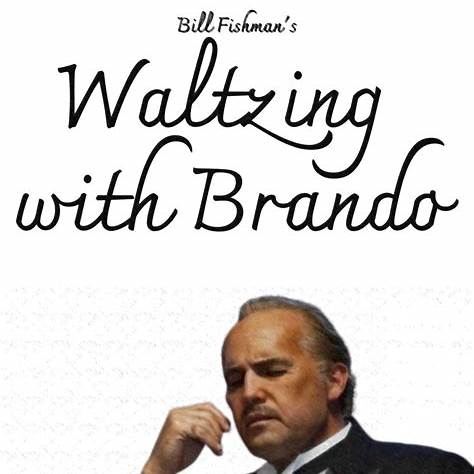Based on Bernard Judge’s 2011 memoir, Waltzing with Brando feels like a half-forgotten story brought vividly to life. Judge, an architect by training, found himself invited to Tahiti by Marlon Brando to help design not just a home but a sustainable paradise on a remote island. What unfolds on screen is a tale of unlikely partnership, clashing visions, and a dream teetering between fantasy and folly.
The film begins with Judge tasked with conceiving an entire model for eco-living years before “sustainability” was a cultural buzzword. It is both opportunity and nightmare: the chance to create something groundbreaking in an environment of dazzling beauty, but also the burden of satisfying a man whose larger-than-life persona and unpredictable moods make every decision perilous. How do you fulfill the vision of a figure who reshaped cinema while working against geography, logistics, and sheer ego? That tension becomes the core of the film.
Billy Zane’s performance is the production’s calling card. He doesn’t merely impersonate Brando; he embodies him. There are moments where it feels less like acting than channeling. The voice, the posture, the mercurial shifts in mood—Zane captures the contradictions ofBrando in a way that is startlingly effective. Credit is due not only to Zane’s craft but also to the makeup team. Their seamless artistry transforms him into a convincing likeness, allowing the performance to exist without distraction. The physical resemblance is uncanny, and it anchors the illusion so thoroughly that one quickly forgets there is an actor behind the face. It is invisible artistry of the highest order and should not be overlooked come awards season.
Yet, despite Brando’s gravitational pull, this is Bernard’s story. Jon Heder delivers a quiet, restrained performance that grounds the film in humanity. While audiences may come expecting Brando to dominate, the narrative is deliberately told through Judge’s eyes. This perspective is crucial. Brando remains enigmatic, even unknowable, but Bernard’s struggle is one viewers can identify with: a professional asked to perform under impossible conditions, trying to reconcile ethics and practicality with someone else’s dream. His persistence becomes the moral anchor of the story.
The interplay between the two men creates the film’s central rhythm. Zane’s Brando is playful one moment, brooding the next, domineering yet oddly vulnerable. Heder’s Bernard counters with patience and resolve, a steady presence against the whirlwind of Brando’s demands. Together, they form an unlikely duet that gives the film its emotional traction. Both performances are award-worthy—Heder as Best Actor for his subtle persistence, Zane as Supporting Actor for his uncanny portrayal of a legend who could never be truly contained.
Still, the film is not without flaws. Some sequences feel ornamental, offering picturesque diversions without advancing the story. Most problematic is a moment in which Bernard behaves in a way wholly out of character. The film spends so much time building him as principled and steady that the sudden lapse feels jarring, more contrived provocation than natural development. The stumble lingers, though the film recovers thanks to the steadiness of Heder and the magnetism of Zane.
The Tahitian setting functions as a character of its own. The beaches shimmer, the lagoons pulse with color, and the isolation of the island mirrors the isolation Brando carried within himself. Cinematographer and director alike use the landscape not just as backdrop but as metaphor. Paradise is alluring, but it is also unforgiving, and the struggle to build something lasting there reflects the larger struggle of reconciling dreams with reality.
Beyond the performances and scenery, Waltzing with Brando succeeds as revelation. Many viewers will not know this chapter of Brando’s life—that he earnestly attempted to create an eco-conscious retreat decades before environmentalism entered mainstream conversation. That discovery adds a surprising dimension to the Brando myth, peeling back layers of celebrity to reveal ambition and idealism. It reminds us that legends are defined not only by their roles on screen but by the pursuits they chased when the cameras were off.
Yes, the film is uneven. At times the pacing wavers, lingering too long on diversions that feel ornamental. At others, it rushes through moments that beg for more reflection. But despite its rough edges, the movie delivers something rare: a portrait that is both character study and cultural history, equal parts myth and revelation.
In the end, Waltzing with Brando is memorable not because it is perfect, but because it is fascinating. Zane and Heder elevate the material, the island setting dazzles, and the story it tells is one worth discovering. Imperfect though it may be, it is a film that lingers, reminding us that even the most mythologized figures were dreamers chasing impossible visions.


